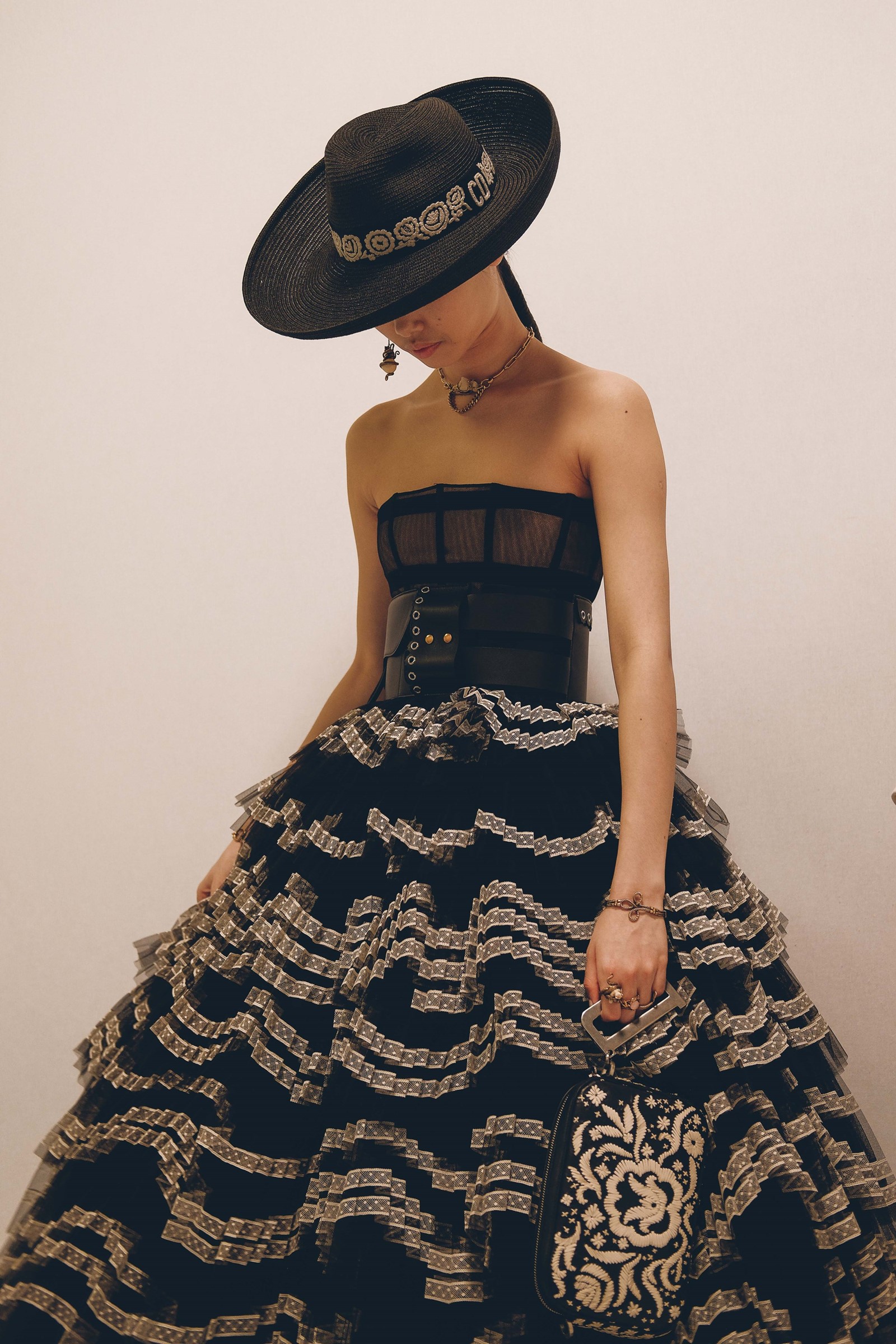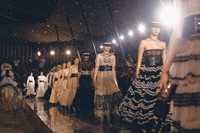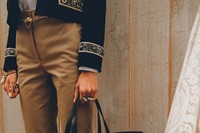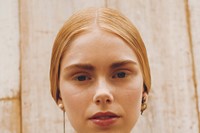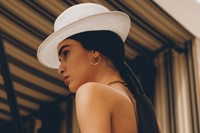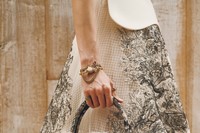Escaramuza is the Spanish word for skirmish but, more evocatively, it describes a band of Mexican female horse riders clad in broad sombrero hats and tight-waisted, full-skirted dresses. They hark back to the soldaderas of the Mexican revolution – female troops, often called Adelitas, who fought alongside their male counterparts in the Mexican Revolution which begun in 1910. Some did so dressed as men – Amelio Robles Ávila was born Amelia, but he adopted a male identity first for the revolution, and ultimately identified as male for the rest of his life – but many soldaderas wore the flounced, feminine folk dress of their villages, riding into battle side saddle. Their vestiges can be seen in the escaramuza charra, a Mexican sport whereby a troupe of women dance their horses through choreographies to the rhythm of traditional music.
Long preamble, but those escaramuza were the inspiration for Maria Grazia Chiuri’s Cruise 2019 show for the venerable house of Dior, incongruously exported to the Grandes Écuries (Great Stables) of the Château de Chantilly, 30 miles north of Paris. The export was literal as well as ideological – a corps of the riders cantered out into the manège that formed the centrepiece of the Dior catwalk and twirled through their intricate steps before the show began. They were dressed in Dior – again, literal and ideological, their tooled leather belts bearing the house’s name and their swishing full skirts, slender bodices and wide-brimmed hats bearing with equal clarity the imprint of the New Look, coincidental though it may be. As the models began to emerge, the same silhouette was echoed as it always is at Dior, where the maison’s history is a springboard for contemporary explorations. The notion of the Amazon woman was something of an anathema to Dior – he wanted to dress women not as wartime Amazons but as flowers, he stated – but he did dedicate styles to the elegant notion of the Amazone, the French female horseback riders who give their name to the Gallic terminology for side saddle.
“Chiuri’s message was one of strident, strong femininity – motivated, militant, and free” – Alexander Fury
There’s plenty of equestrianism in the history of Dior. Maria Grazia Chiuri is both canny and confident in her embracing not only of the designs of the founding Monsieur Dior himself – comprising a slender decade, an era when his clientele still changed multiple times in a manner more akin to Victorian times than today – but of the entire spectrum of artistic directors between he and she. Dior are publishing a bunch of books, loosely coinciding with the house’s 70th anniversary last year, celebrating each individually (disclosure: I’ve just finished the one on Gianfranco Ferré, Chiuri’s Italian forebear whom she sometimes references), which help to delineate the aesthetic lineage of styles. So while Dior himself dubbed styles ‘Rodeo’ (1948) and ‘Longchamps’ (1952), to underline specific equestrienne themes, Ferré’s first show in 1989, the first by a non-French artistic director of Dior, incidentally, was titled Ascot-Cecil Beaton and featured dressage top-hats, red riding coats and homages to Beaton’s famous black-and-white race scene in My Fair Lady.
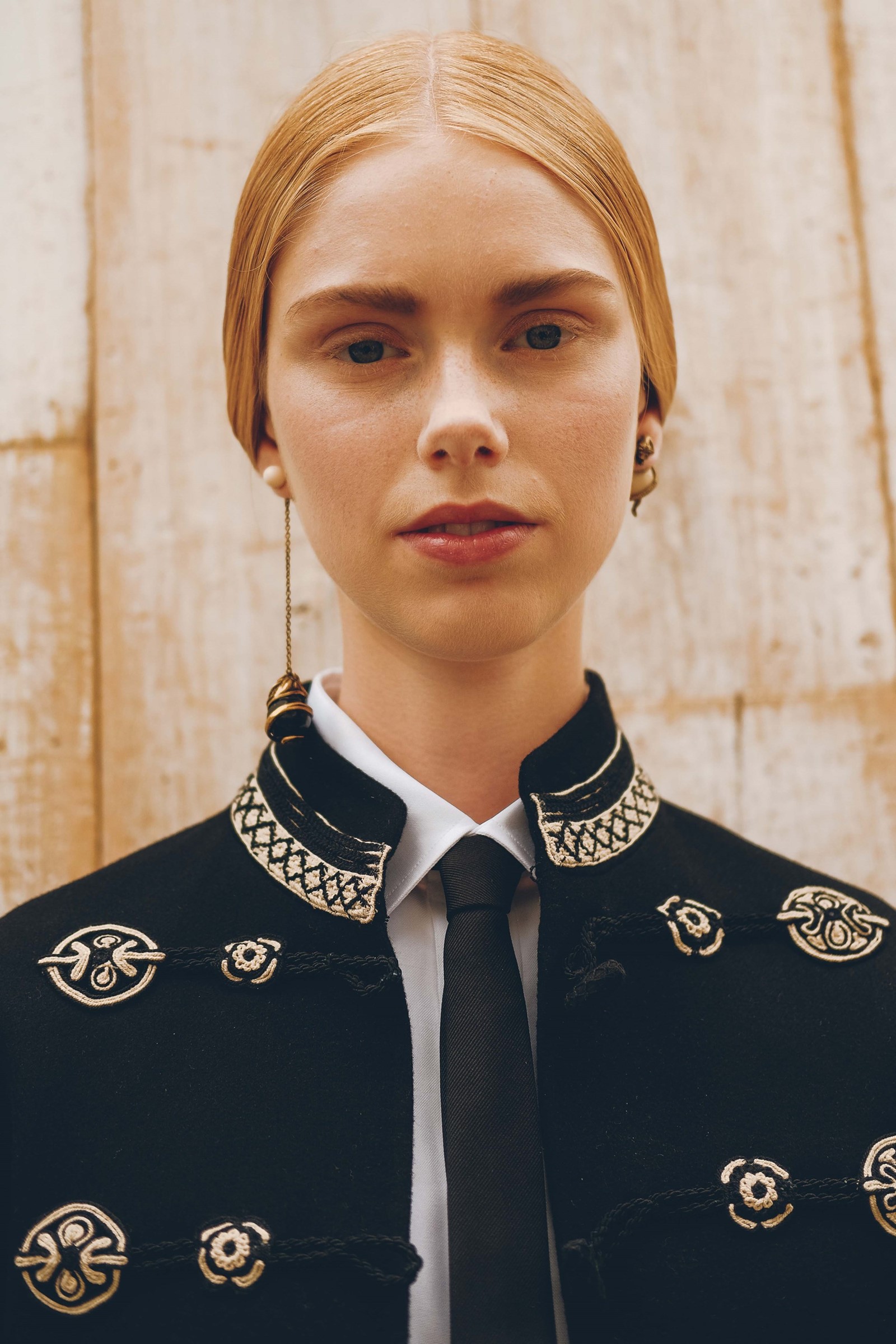

John Galliano’s horsey streak was marked: he created a whole collection devoted to it, mixed with Charles James’ client Millicent Rogers and with Bar jackets pulled to evoke side saddle riding. In another, he dressed models as modern huntresses – Amazones, indeed – in hunting pinks and suede utility gear, and sent them out toting shotguns and with entire menageries of stuffed animals on their heads. Get there message? More commercially, Galliano also invented the bestselling Dior ‘Saddle’ bag, a pochette-style purse popularised around the turn of this century, later jettisoned as naff but over the past few years seized upon by new generations who, then toddlers, remember the early versions as their mothers’ favourites or, perhaps, via Sarah Jessica Parker on Sex and the City. It was reconfigured, reinvented and resurrected by Chiuri in her winter ready-to-wear show, but it has never felt more at home than in the rodeo ring. Or “Diorodeo”, as the house hashtagged its Cruise 2019 excursion. See what they did there?
The fusion of Paris and Mexico – PexMex? – wasn’t as strange as it may immediately seem, because Chiuri discovered the distinct similarities to explore, and the differences to ignore. Chiuri’s message was one of strident, strong femininity – motivated, militant, and free. The idea being that a woman didn’t need to surrender femininity in order to have the freedom of a man; that power and femaleness aren’t mutually exclusive. So the models moved easily in full skirts and flat shoes, the former lightly constructed of cottons and silks and signature Chantilly laces, the latter often of rubber. Which was suitable for May weather than felt neither French nor Mexican but, rather, quaintly English. In short, it poured. But the sky was a fitting shade of Dior grey. So even that felt oddly on-brand.
